ART NEWS: March.01
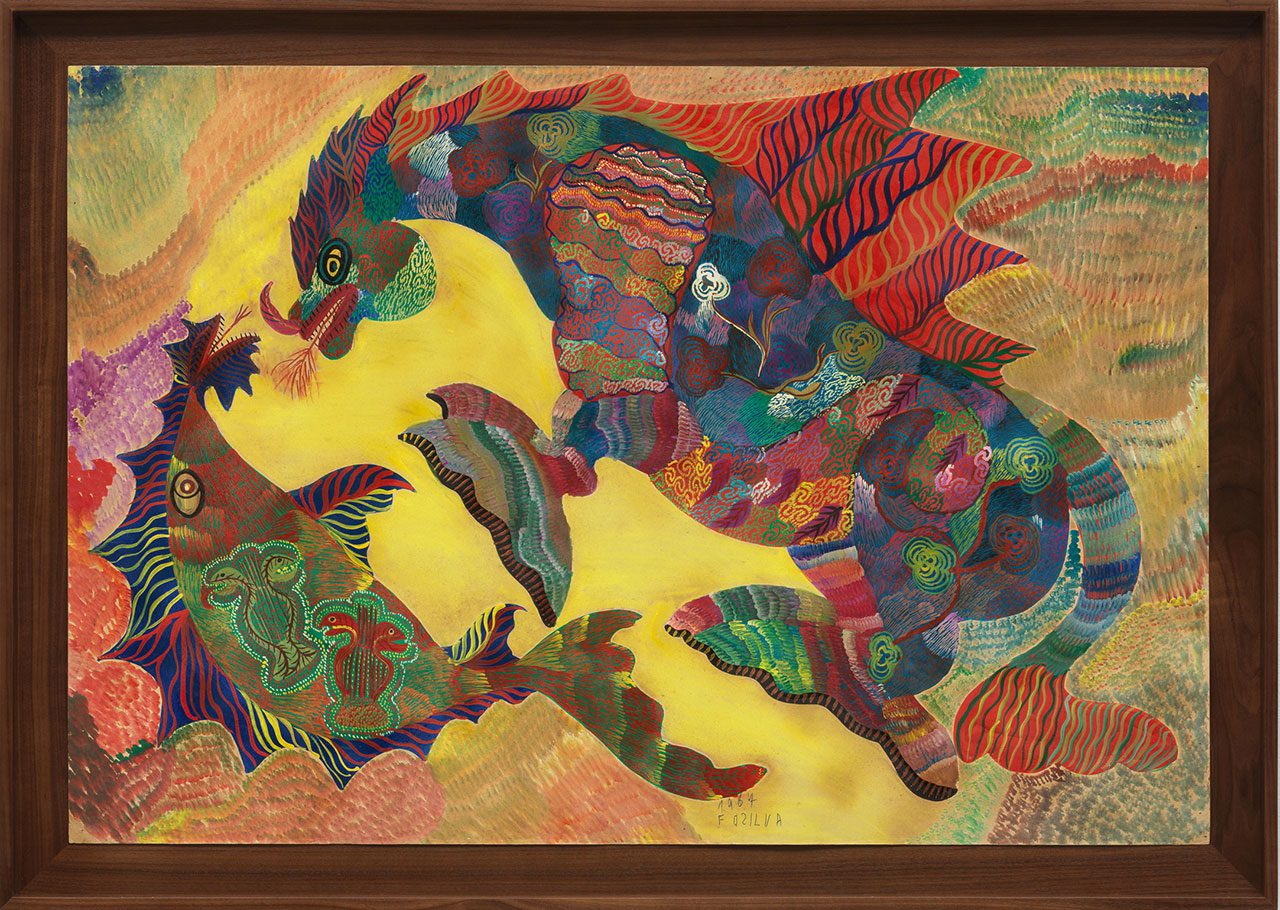 Over a prolific career spanning four decades, Chico da Silva devoted himself to depicting the celestial, otherworldly realms within his imagination. His work, which spans a rich and varied body of paintings, drawings, and performance, encapsulates a profound engagement with the intersection of personal mythology, cultural history, and collective creativity. The exhibition “Amazônico” brings together exemplary paintings from the 1980s—an often-overlooked phase of Chico’s career—alongside works from the 1960s, offering a comprehensive look at his practice and insight into the evolution of his distinctive artistic vision. Born in Alto Tejo, Brazil, Chico’s early years in the Amazon deeply influenced the development of his cosmology of fantastical creatures and environments. As a teenager, he moved to Pirambu with his mother. It was only a few years later that Swiss art critic Jean-Pierre Chabloz saw him drawing on some neighborhood buildings and quickly became a key supporter, launching Chico’s international career. By the early-to-mid 1960s, Chico had honed his unique style, working primarily on paper and depicting creatures—both real and imagined—in suspended states of conflict. Chico continued to garner significant attention, culminating with an invitation to participate in the 1966 Venice Biennale, where he received an honorable mention. A work from this pivotal year is included in “Amazônico”. The only painting in the original artist frame, this work offers critical insight into Chico’s process: the painting’s frame bears marks from the artist, who constantly wiped his brush onto the frame’s border to ensure precision in every stroke. Info: David Kordansky Gallery, 5130 W. Edgewood Pl., Los Angeles, CA, USA, Duration: 13/3-26/4/2025, Days & Hours: Tue-Sat 10:00-18:00, www.davidkordanskygallery.com/
Over a prolific career spanning four decades, Chico da Silva devoted himself to depicting the celestial, otherworldly realms within his imagination. His work, which spans a rich and varied body of paintings, drawings, and performance, encapsulates a profound engagement with the intersection of personal mythology, cultural history, and collective creativity. The exhibition “Amazônico” brings together exemplary paintings from the 1980s—an often-overlooked phase of Chico’s career—alongside works from the 1960s, offering a comprehensive look at his practice and insight into the evolution of his distinctive artistic vision. Born in Alto Tejo, Brazil, Chico’s early years in the Amazon deeply influenced the development of his cosmology of fantastical creatures and environments. As a teenager, he moved to Pirambu with his mother. It was only a few years later that Swiss art critic Jean-Pierre Chabloz saw him drawing on some neighborhood buildings and quickly became a key supporter, launching Chico’s international career. By the early-to-mid 1960s, Chico had honed his unique style, working primarily on paper and depicting creatures—both real and imagined—in suspended states of conflict. Chico continued to garner significant attention, culminating with an invitation to participate in the 1966 Venice Biennale, where he received an honorable mention. A work from this pivotal year is included in “Amazônico”. The only painting in the original artist frame, this work offers critical insight into Chico’s process: the painting’s frame bears marks from the artist, who constantly wiped his brush onto the frame’s border to ensure precision in every stroke. Info: David Kordansky Gallery, 5130 W. Edgewood Pl., Los Angeles, CA, USA, Duration: 13/3-26/4/2025, Days & Hours: Tue-Sat 10:00-18:00, www.davidkordanskygallery.com/
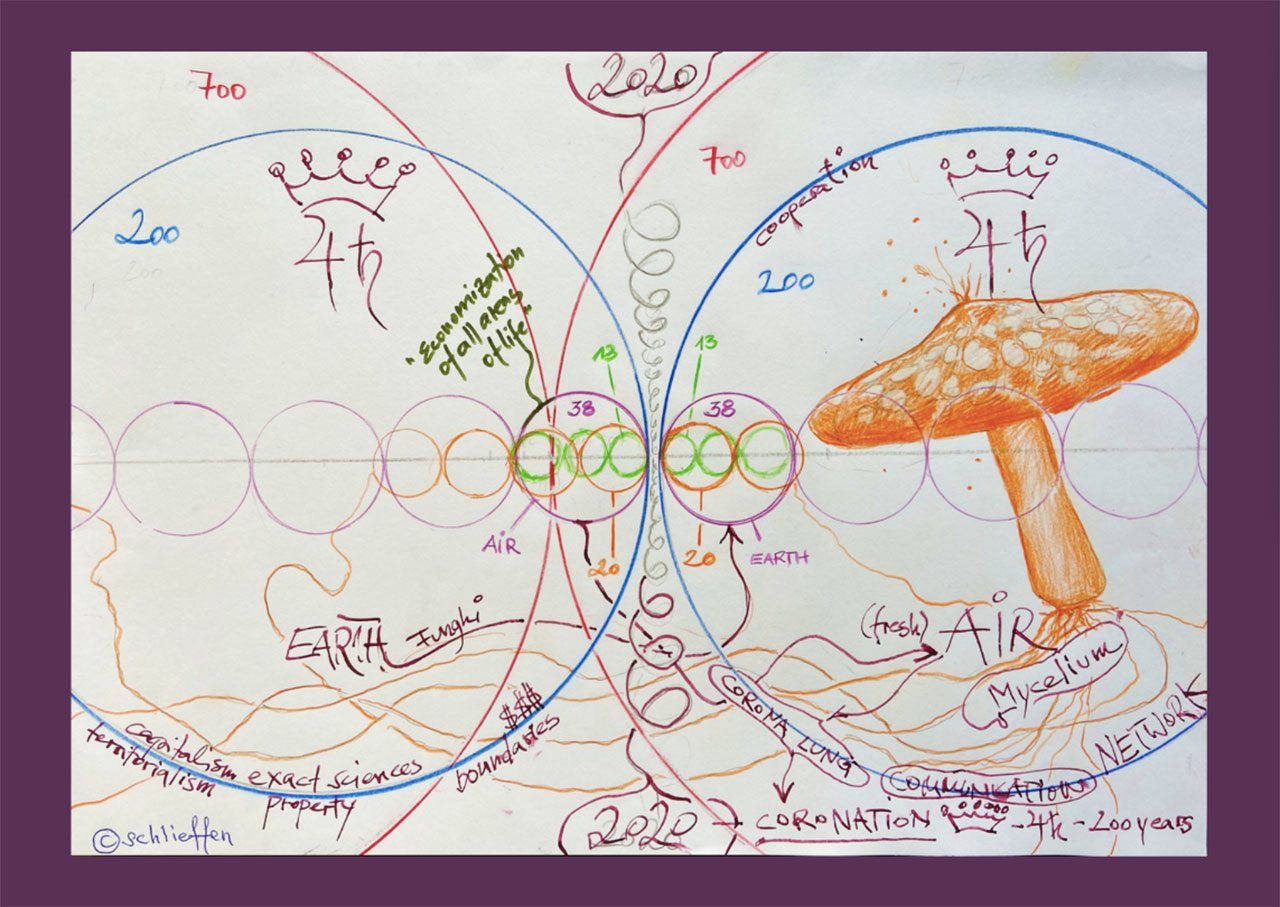 The Feuerle Collection presents a cycle of four exhibitions with paintings and astrological lectures by Alexander Graf von Schlieffen, With this project, the institution explores for the first time within its cultural program the field of astrology, an essential element of von Schlieffen’s practice, and a recurring reference in Western art since the Italian Renaissance, which continues to garner significant attention in contemporary society. Alexander Graf von Schlieffen’s work as a painter began in the late 1980s and has evolved over time, drawing on motifs from the Italian Renaissance and influences from American color field painting. His artistic practice reflects a profound exploration of symbolism, interconnectedness, and mysticism. Parallel to his work as a painter, von Schlieffen began his journey as an astrologist in 1991, developing a deep engagement with the cyclical patterns of life and the philosophical dimensions of this discipline. This dual focus has informed and enriched both his artistic and astrological practices. The selection of works for the four episodes of the show traces the evolution of von Schlieffen’s painting practice, presenting both early and recent pieces. Feuerle’s curation will employ his distinctive, refined use of light and space design to highlight and unveil crucial aspects of the artworks in an intimately sensual way. Info: Curator: Désiré Feuerle, The Feuerle Collection, Hallesches Ufer 70, Berlin, Germany, Duration: First Exhibition 13/3-27/4/2025, Second Exhibition 2/5-1/6/2025, Third Exhibition 13/6-7/9/2025, Fourth exhibition 12/9-9/11/2025, Days & Hours: By appointment only (Book here), www.thefeuerlecollection.org/
The Feuerle Collection presents a cycle of four exhibitions with paintings and astrological lectures by Alexander Graf von Schlieffen, With this project, the institution explores for the first time within its cultural program the field of astrology, an essential element of von Schlieffen’s practice, and a recurring reference in Western art since the Italian Renaissance, which continues to garner significant attention in contemporary society. Alexander Graf von Schlieffen’s work as a painter began in the late 1980s and has evolved over time, drawing on motifs from the Italian Renaissance and influences from American color field painting. His artistic practice reflects a profound exploration of symbolism, interconnectedness, and mysticism. Parallel to his work as a painter, von Schlieffen began his journey as an astrologist in 1991, developing a deep engagement with the cyclical patterns of life and the philosophical dimensions of this discipline. This dual focus has informed and enriched both his artistic and astrological practices. The selection of works for the four episodes of the show traces the evolution of von Schlieffen’s painting practice, presenting both early and recent pieces. Feuerle’s curation will employ his distinctive, refined use of light and space design to highlight and unveil crucial aspects of the artworks in an intimately sensual way. Info: Curator: Désiré Feuerle, The Feuerle Collection, Hallesches Ufer 70, Berlin, Germany, Duration: First Exhibition 13/3-27/4/2025, Second Exhibition 2/5-1/6/2025, Third Exhibition 13/6-7/9/2025, Fourth exhibition 12/9-9/11/2025, Days & Hours: By appointment only (Book here), www.thefeuerlecollection.org/
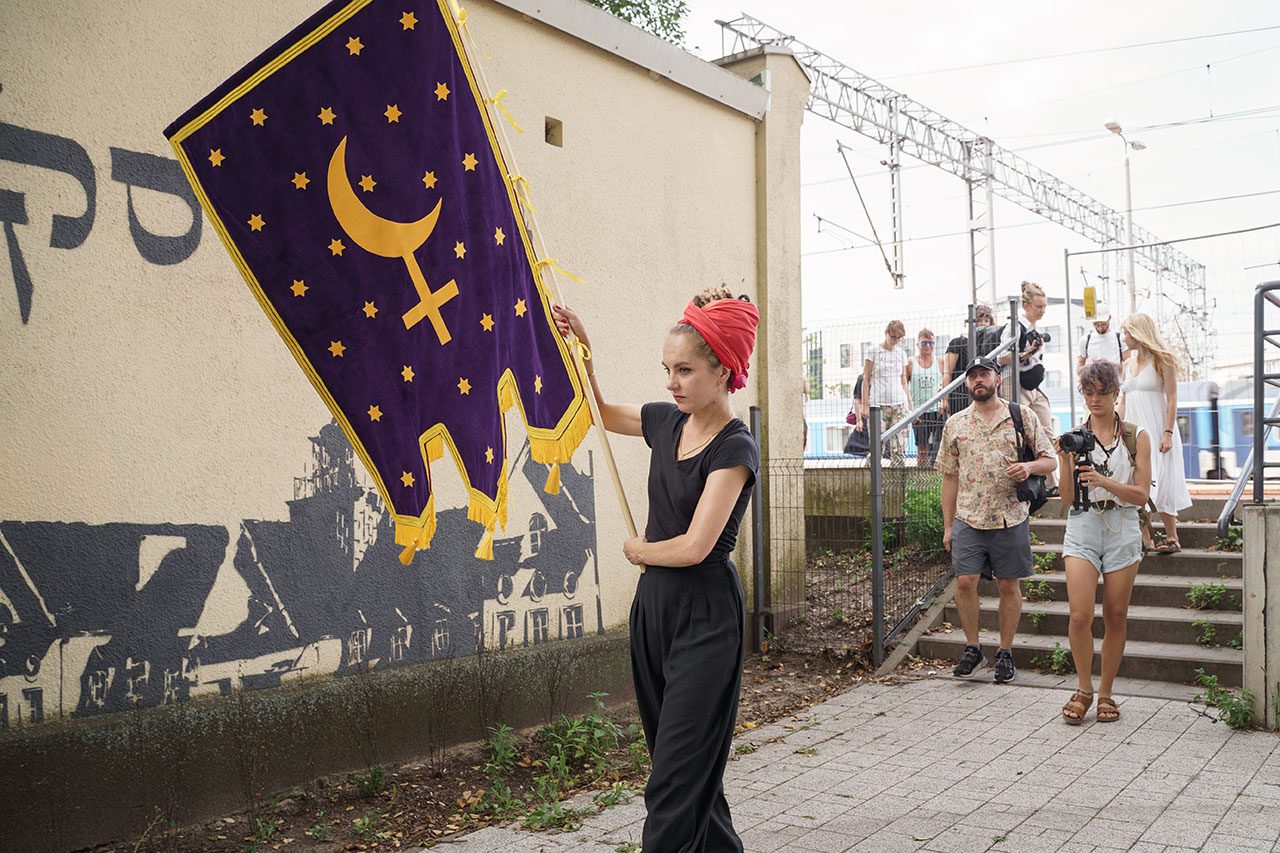 “Familiar Strangers. The Eastern Europeans from a Polish Perspective” is an exhibition of contemporary art reflecting upon recent changes in Eastern Europe. It starts from the perspective of diasporas, minorities and those who make the public sphere richer, in a region long considered culturally homogeneous, even if it was never truly a case. Each of the rooms of the exhibition is inhabited by a different artist, presenting paintings, sculptures, videos, films, installations, and textiles, gathering over 40 works by 13 artists, most of which are shown in Belgium for the first time. In a highly turbulent period for Europe, the exhibition explores how social and political struggles intertwine with personal stories. Familiar Strangers calls for the necessity of a Europe in which we see and hear each other for who we really are, with and despite our differences The diaspora and minorities take centre stage in this exhibition and show how fragile and complex interactions can be, between the transcultural and the local, the individual and the collective, the familiar and the uncanny. Works by: Oliwia Bosomtwe, Assaf Gruber, Zuzanna Hertzberg, Renata Rara Kamińska, Jasmina Metwaly, Małgorzata Mirga-Tas, Natalia LL, Ngo Van Tuong, Open Group, Janek Simon, Shadow Architecture, Jana Shostak and Mikołaj Sobczak. Info: Curator: Joanna Warsza, BOZAR Centre for Fine Arts, Rue Ravensteinstraat 23, Brussels, Belgium, Duration: 14/3-29/6/2025, Days & Hours: Tue-Sun 10:00-18:00, www.bozar.be/
“Familiar Strangers. The Eastern Europeans from a Polish Perspective” is an exhibition of contemporary art reflecting upon recent changes in Eastern Europe. It starts from the perspective of diasporas, minorities and those who make the public sphere richer, in a region long considered culturally homogeneous, even if it was never truly a case. Each of the rooms of the exhibition is inhabited by a different artist, presenting paintings, sculptures, videos, films, installations, and textiles, gathering over 40 works by 13 artists, most of which are shown in Belgium for the first time. In a highly turbulent period for Europe, the exhibition explores how social and political struggles intertwine with personal stories. Familiar Strangers calls for the necessity of a Europe in which we see and hear each other for who we really are, with and despite our differences The diaspora and minorities take centre stage in this exhibition and show how fragile and complex interactions can be, between the transcultural and the local, the individual and the collective, the familiar and the uncanny. Works by: Oliwia Bosomtwe, Assaf Gruber, Zuzanna Hertzberg, Renata Rara Kamińska, Jasmina Metwaly, Małgorzata Mirga-Tas, Natalia LL, Ngo Van Tuong, Open Group, Janek Simon, Shadow Architecture, Jana Shostak and Mikołaj Sobczak. Info: Curator: Joanna Warsza, BOZAR Centre for Fine Arts, Rue Ravensteinstraat 23, Brussels, Belgium, Duration: 14/3-29/6/2025, Days & Hours: Tue-Sun 10:00-18:00, www.bozar.be/
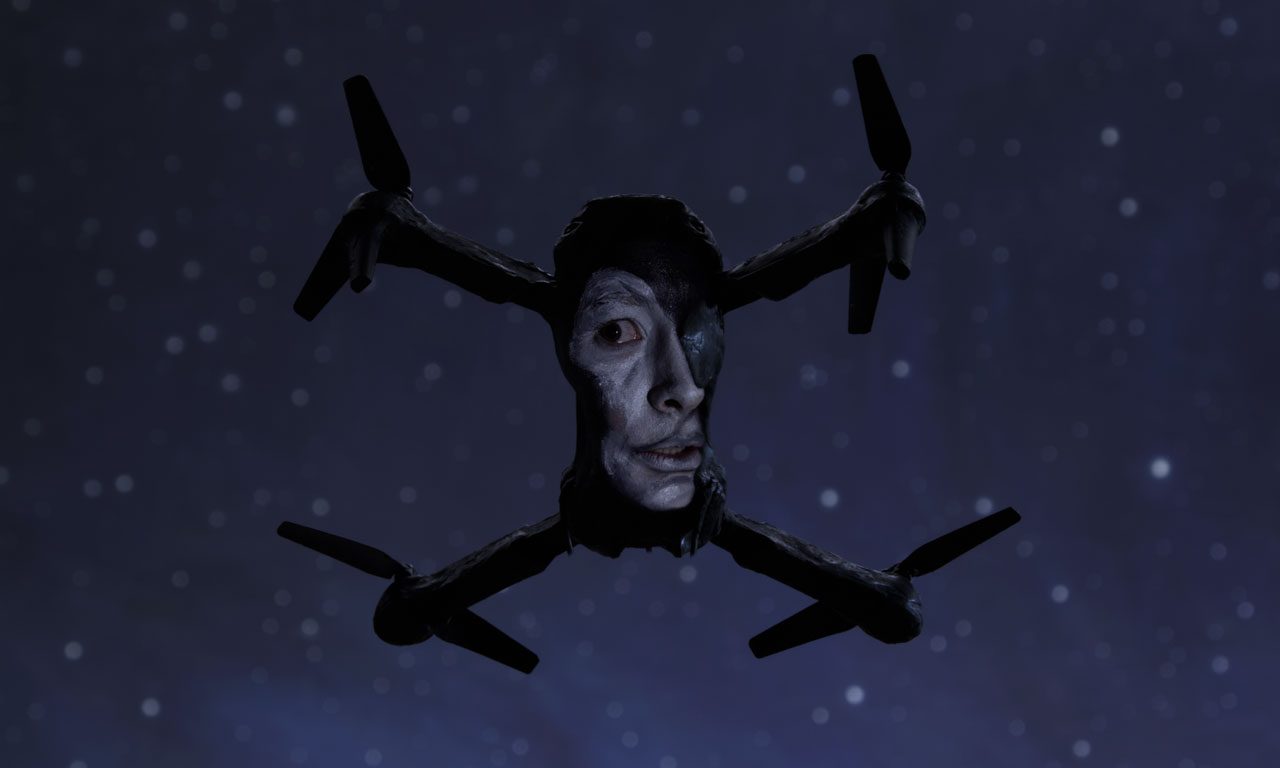 Dana Kavelina’s exhibition “Just Landscape” presents her latest film that intertwines history and recurrence, as if time itself was caught in an endless rhyme. At the heart of the film is a Yiddish song about hunger that was written and sung during World War I in Poland. The song uses the metaphor of the wind as a force of destruction—blowing away rooftops, birds, crops, and trees, leaving behind a landscape of desolation. Reappearing during the Holocaust, it gained new significance as an expression of suffering and loss, an echo of a catastrophe unfolding again. In Just Landscape, the song operates as both an auditory and emotional anchor, resonating with themes of displacement, war, and survival. The film’s opening text introduces another layer of coded language, drawn from anonymous messages posted on Telegram channels in Kyiv. These cryptic lines—such as “three green olives and one black olive near the metro”—function as warnings, alerting men to the presence of mobilization brigades. “Olives” symbolize draft officers in green uniforms, “black olives” refer to the police, and “clouds” signal patrols that sweep through the city. Info: Curator: Mirela Baciak, Salzburger Kunstverein, Künstlerhaus, Hellbrunner Straße 3, Salzburg, Austria, Duration: 15/3-4/5/2025, Days & Hours: Tue-Sun 12:00-19:00, https://salzburger-kunstverein.at/
Dana Kavelina’s exhibition “Just Landscape” presents her latest film that intertwines history and recurrence, as if time itself was caught in an endless rhyme. At the heart of the film is a Yiddish song about hunger that was written and sung during World War I in Poland. The song uses the metaphor of the wind as a force of destruction—blowing away rooftops, birds, crops, and trees, leaving behind a landscape of desolation. Reappearing during the Holocaust, it gained new significance as an expression of suffering and loss, an echo of a catastrophe unfolding again. In Just Landscape, the song operates as both an auditory and emotional anchor, resonating with themes of displacement, war, and survival. The film’s opening text introduces another layer of coded language, drawn from anonymous messages posted on Telegram channels in Kyiv. These cryptic lines—such as “three green olives and one black olive near the metro”—function as warnings, alerting men to the presence of mobilization brigades. “Olives” symbolize draft officers in green uniforms, “black olives” refer to the police, and “clouds” signal patrols that sweep through the city. Info: Curator: Mirela Baciak, Salzburger Kunstverein, Künstlerhaus, Hellbrunner Straße 3, Salzburg, Austria, Duration: 15/3-4/5/2025, Days & Hours: Tue-Sun 12:00-19:00, https://salzburger-kunstverein.at/
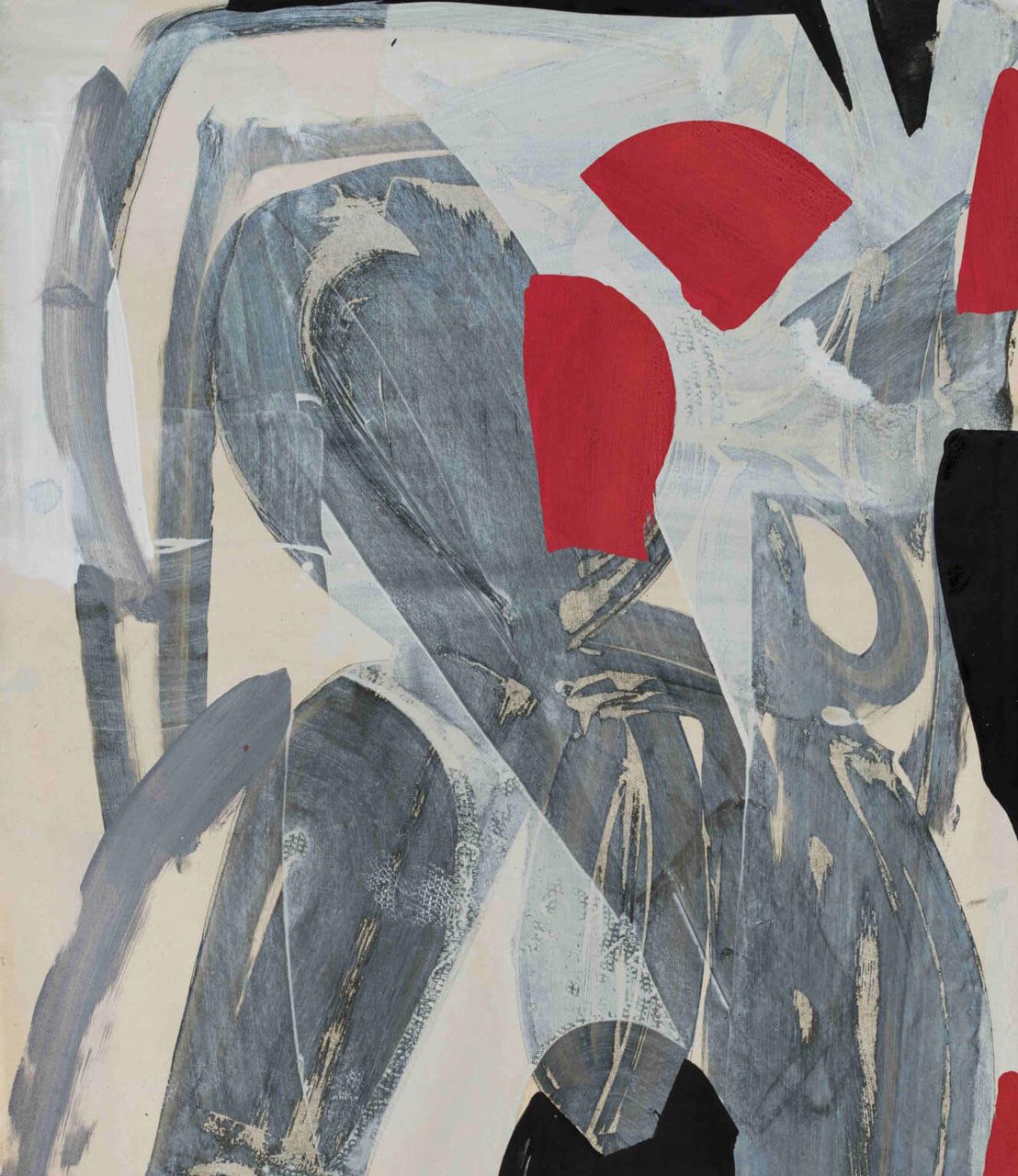 “Oh, Clock!” is the first major solo exhibition in Germany by Amy Sillman. Drawing on her long and distinguished engagement with painting and its history both on and beyond the canvas, the show offers a comprehensive exploration of the artist’s highly versatile and hybrid systems of artmaking. The exhibition is composed of two parts: Part one of the exhibition features a focused selection of Sillman’s work from the past decade, including twenty-four paintings, more than three hundred drawings, prints and collages, several large installations, and digital animations. The second part is a curatorial project by the artist, featuring hand-painted walls intervening diagonally in exhibition rooms, hung with dozens of works chosen from the Ludwig Collection in Aachen. The title of the exhibition refers to Sillman’s long-standing interest in exploring painting as a timebased medium. Each work charts different units and modes of time; the large-scale canvases are both intuitively and analytically constructed over long periods of up to a year, during which time they are repeatedly drawn, destroyed, and ultimately reworked layer by layer. “There is time in the paintings—the time of their creation, which remains largely hidden from the viewer. I like to expose the under-layers to think about how time is wrapped up in them,” explains the artist. Unfurled drawings track Sillman’s moment-bymoment process; she uses mechanical mean—animation and printmaking—to create orchestrations of time within architecture. Info: Curator: Eva Birkenstock, Curatorial assistance: Mailin Haberland and Anna Marckwald, Ludwig Forum Aachen, Jülicher Str. 97-109, Aachen, Germany, Duration: 21/3-31,8,2025, Days & Hours: Tue-Wed & Fri-Sun 10:00-17:00, Thu 10:00-20:00, https://ludwigforum.de/
“Oh, Clock!” is the first major solo exhibition in Germany by Amy Sillman. Drawing on her long and distinguished engagement with painting and its history both on and beyond the canvas, the show offers a comprehensive exploration of the artist’s highly versatile and hybrid systems of artmaking. The exhibition is composed of two parts: Part one of the exhibition features a focused selection of Sillman’s work from the past decade, including twenty-four paintings, more than three hundred drawings, prints and collages, several large installations, and digital animations. The second part is a curatorial project by the artist, featuring hand-painted walls intervening diagonally in exhibition rooms, hung with dozens of works chosen from the Ludwig Collection in Aachen. The title of the exhibition refers to Sillman’s long-standing interest in exploring painting as a timebased medium. Each work charts different units and modes of time; the large-scale canvases are both intuitively and analytically constructed over long periods of up to a year, during which time they are repeatedly drawn, destroyed, and ultimately reworked layer by layer. “There is time in the paintings—the time of their creation, which remains largely hidden from the viewer. I like to expose the under-layers to think about how time is wrapped up in them,” explains the artist. Unfurled drawings track Sillman’s moment-bymoment process; she uses mechanical mean—animation and printmaking—to create orchestrations of time within architecture. Info: Curator: Eva Birkenstock, Curatorial assistance: Mailin Haberland and Anna Marckwald, Ludwig Forum Aachen, Jülicher Str. 97-109, Aachen, Germany, Duration: 21/3-31,8,2025, Days & Hours: Tue-Wed & Fri-Sun 10:00-17:00, Thu 10:00-20:00, https://ludwigforum.de/
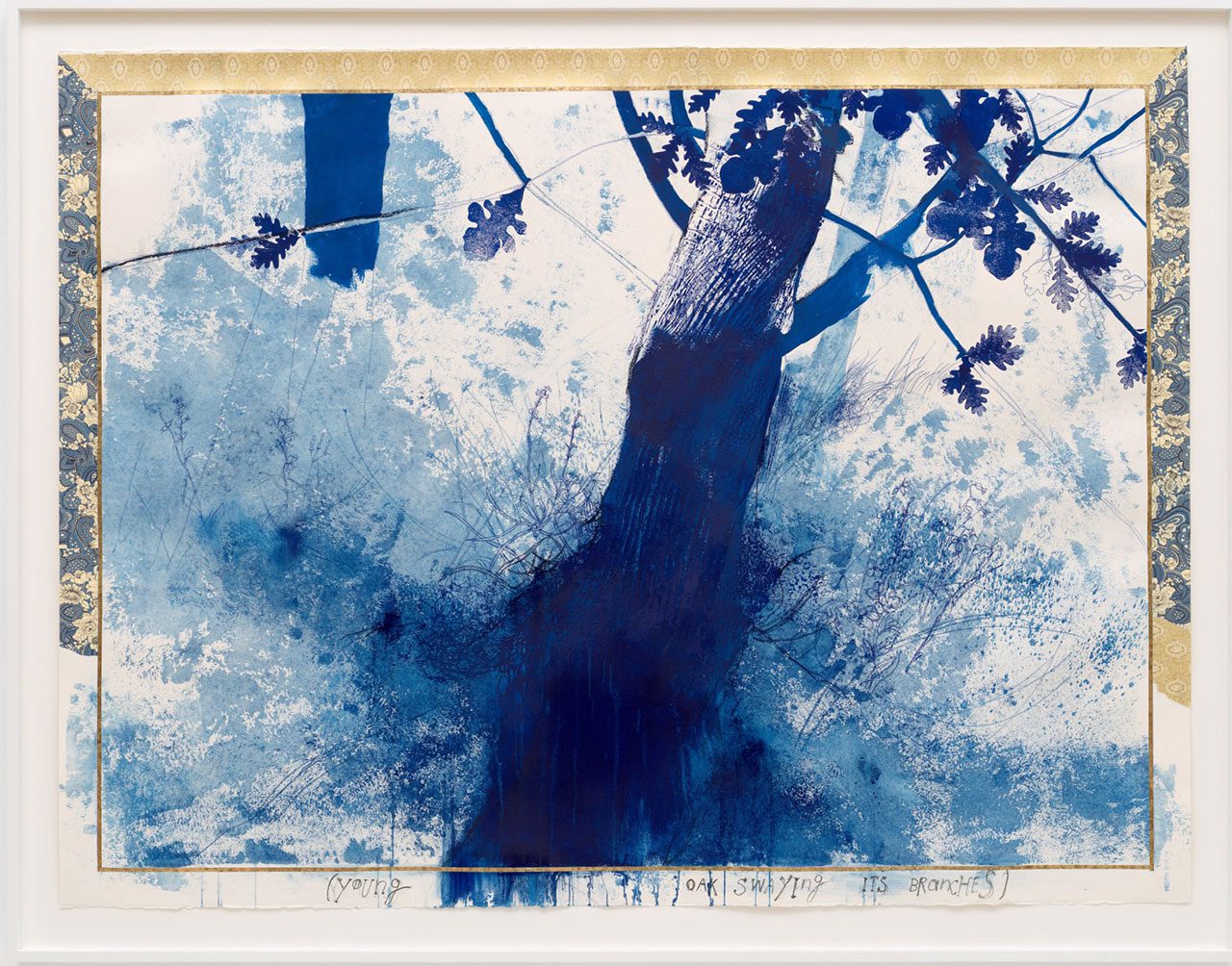 Ricardo Brey’s solo exhibition “Obatalá”, takes its title from the Yoruba deity of human creation (the orisha, or spirit, associated with wisdom, peace, and justice) the show features recent sculptures alongside large-scale works on paper. Drawing on diverse visual traditions, these complementary bodies of work question the primacy of Western worldviews by centering belief systems of African diasporas. Having lived and worked in Ghent, Belgium since 1990, Brey’s transcultural perspective is distinctly personal. In the sculptures on view, he adorns contemporary plaster replicas of ancient Greek statues with found materials that invoke the hybridity of Afro-Caribbean religious worship, such as beads, shells, bottlecaps, rope, cloth, and artificial hair. Brey’s drawings explore similar metaphysical themes from a more introspective point of view. His works on paper build on his longstanding interest in botanical imagery and the color blue, which he associates with the sky and sea—symbols of freedom and expansiveness. Info: Alexander Gray Associates, 384 Broadway, New York, NY, USA, Duration: 21/3-19/4/2025, Days & Hours: Tue-Sat 10:30-18:00, www.alexandergray.com/
Ricardo Brey’s solo exhibition “Obatalá”, takes its title from the Yoruba deity of human creation (the orisha, or spirit, associated with wisdom, peace, and justice) the show features recent sculptures alongside large-scale works on paper. Drawing on diverse visual traditions, these complementary bodies of work question the primacy of Western worldviews by centering belief systems of African diasporas. Having lived and worked in Ghent, Belgium since 1990, Brey’s transcultural perspective is distinctly personal. In the sculptures on view, he adorns contemporary plaster replicas of ancient Greek statues with found materials that invoke the hybridity of Afro-Caribbean religious worship, such as beads, shells, bottlecaps, rope, cloth, and artificial hair. Brey’s drawings explore similar metaphysical themes from a more introspective point of view. His works on paper build on his longstanding interest in botanical imagery and the color blue, which he associates with the sky and sea—symbols of freedom and expansiveness. Info: Alexander Gray Associates, 384 Broadway, New York, NY, USA, Duration: 21/3-19/4/2025, Days & Hours: Tue-Sat 10:30-18:00, www.alexandergray.com/
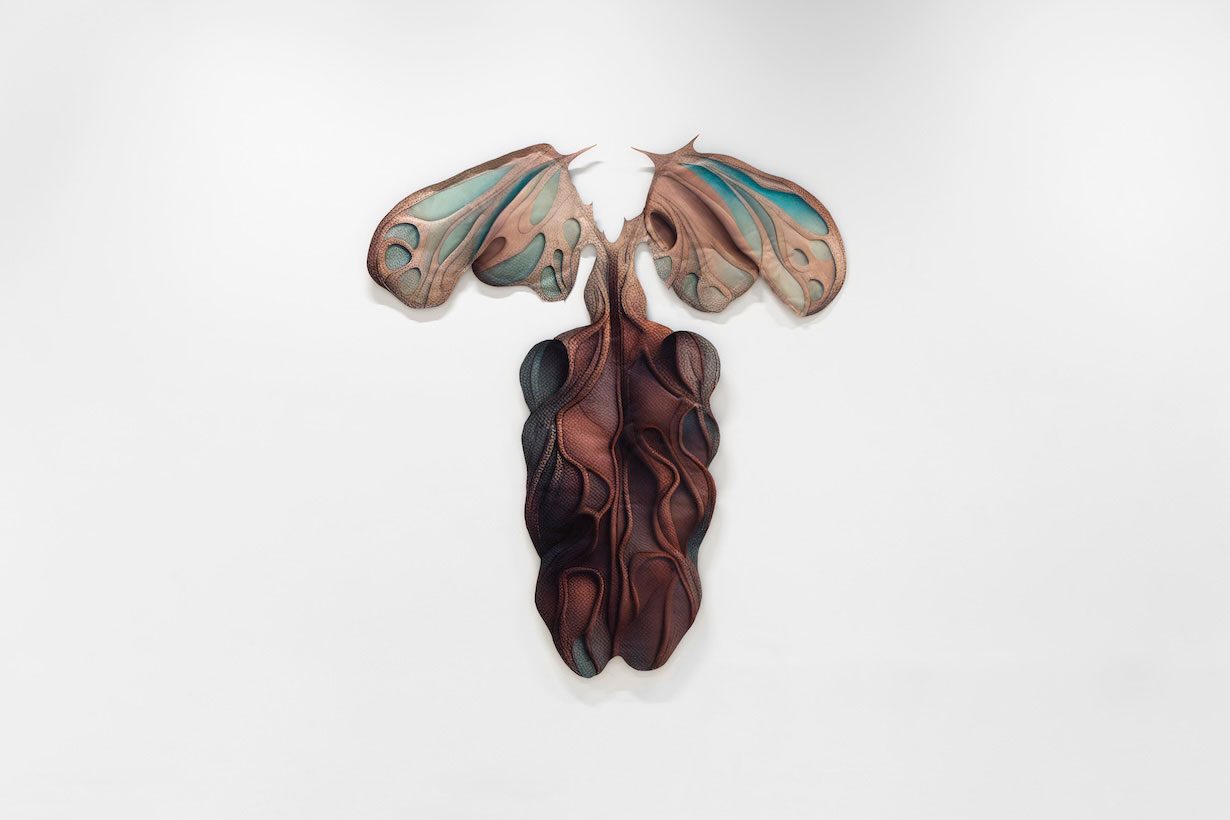 The exhibition “Berserk & Pyrrhia – Contemporary and medieval art” highlights the circulation of medieval images and their later appropriation, and brings together medieval and contemporary art. Medieval works are on display at the Plateau and in the Réserves, thanks to loans from the region’s rich heritage collection, while works by contemporary artists in turn come into contact with medieval heritage by taking over the region’s historic monuments, continuing this intergenerational and transhistorical dialogue. The image of the berserker, the legendary warrior, has spawned a number of offspring in film, video games, manga and rap music. In many myths, the berserker is connected to the earth, to animality, advancing without armor. Pyrrhia, on the other hand, is a butterfly that gave its name to an imaginary island, described in the books “Les Royaumes de feu”, where reason-gifted dragons reign, depopulated by humans, yet there are small beings walking on two legs with a tuft of hair on their heads, called scavengers. This medieval heroic fantasy imagery of pop culture inhabits the worlds of today’s artists. The off-center view of the human that reigns there opens up a different approach to the future. Info: Curator : Céline Poulin, Associate curator : Camille Minh-Lan Gouin, Frac Île-de-France, 22 rue des Alouettes, Paris, France, Duration: 22/3-20/7/2025, Days & Hours: Wed-Sun 14:00-19:00 & Frac Île-de-France, 43, rue de la Commune de Paris, Romainville, Paris, France, Duration: 22/3-20/7/2025, Days & Hours: Wed-Sat 14:00-19:00, www.fraciledefrance.com/
The exhibition “Berserk & Pyrrhia – Contemporary and medieval art” highlights the circulation of medieval images and their later appropriation, and brings together medieval and contemporary art. Medieval works are on display at the Plateau and in the Réserves, thanks to loans from the region’s rich heritage collection, while works by contemporary artists in turn come into contact with medieval heritage by taking over the region’s historic monuments, continuing this intergenerational and transhistorical dialogue. The image of the berserker, the legendary warrior, has spawned a number of offspring in film, video games, manga and rap music. In many myths, the berserker is connected to the earth, to animality, advancing without armor. Pyrrhia, on the other hand, is a butterfly that gave its name to an imaginary island, described in the books “Les Royaumes de feu”, where reason-gifted dragons reign, depopulated by humans, yet there are small beings walking on two legs with a tuft of hair on their heads, called scavengers. This medieval heroic fantasy imagery of pop culture inhabits the worlds of today’s artists. The off-center view of the human that reigns there opens up a different approach to the future. Info: Curator : Céline Poulin, Associate curator : Camille Minh-Lan Gouin, Frac Île-de-France, 22 rue des Alouettes, Paris, France, Duration: 22/3-20/7/2025, Days & Hours: Wed-Sun 14:00-19:00 & Frac Île-de-France, 43, rue de la Commune de Paris, Romainville, Paris, France, Duration: 22/3-20/7/2025, Days & Hours: Wed-Sat 14:00-19:00, www.fraciledefrance.com/
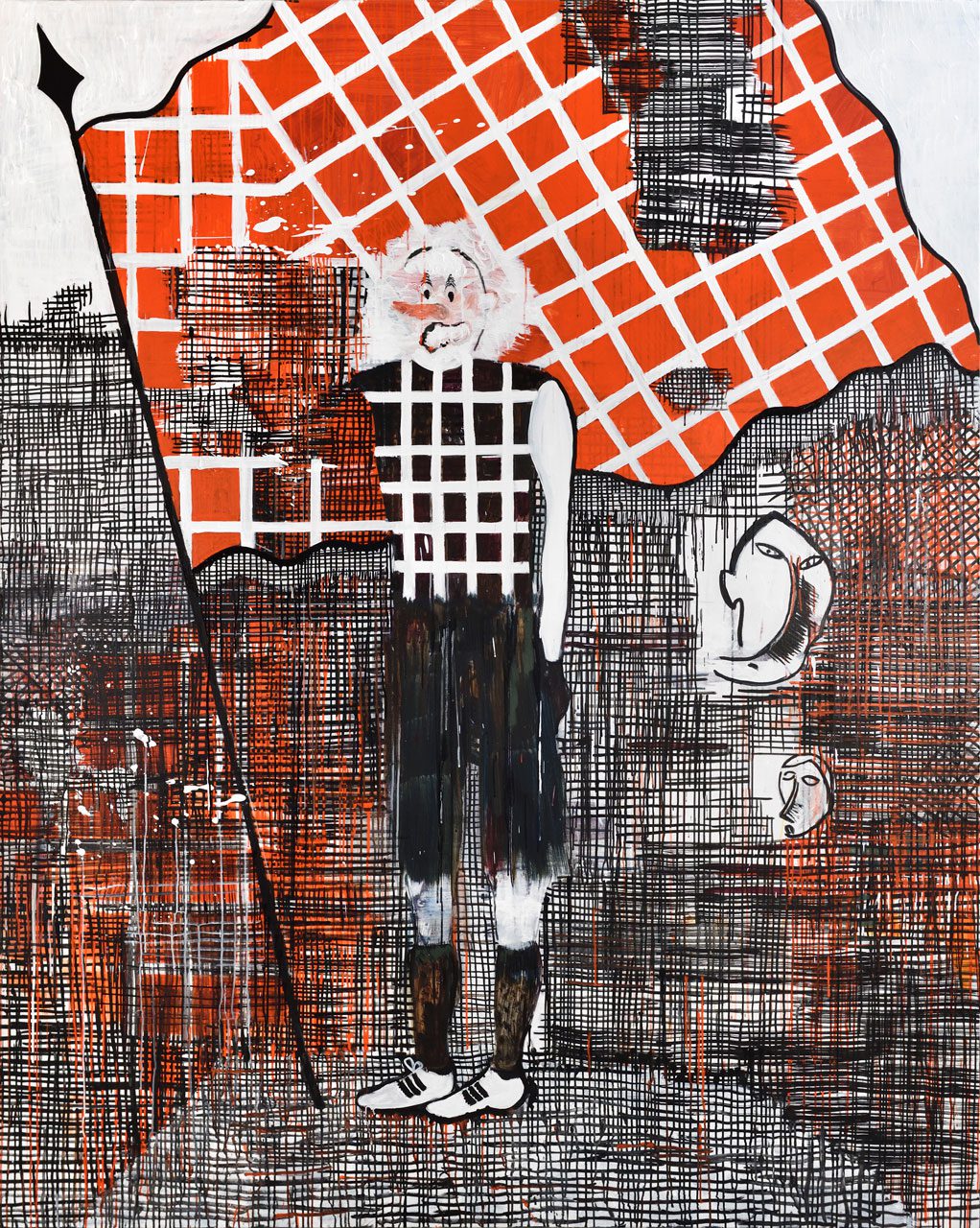 The exhibition “Listen! It’s the eclipse” delves into the world of Hélène Delprat, whose unique history intertwines with that of the Fondation Maeght. The poetic title of the exhibition, borrowed from Alfred Jarry, sets the tone: “Listen! It’s the eclipse.” This showcase offers the best of Hélène Delprat’s personal and shared history through a journey of over sixty works, tracing her singular adventure. Often favoring unconventional paths over assured success, she took the road less traveled. Upon leaving the École des Beaux-Arts, her stay at the Villa Médicis and her entry into the prestigious Galerie Maeght seemed to promise a clear trajectory. However, she chose to complicate her life by challenging the obvious, avoiding success, and ultimately withdrawing from the spotlight—though she never stopped painting, lamenting the struggles it entailed. The exhibition features more than sixty paintings, drawings, sculptures, films, photographs, and ceramics, organized into eight sequences. Two original sculptures, designed specifically for the Fondation Maeght’s pools, set the tone right at the entrance. Through a daily practice that combines drawing, painting, photography, archives, and video, she develops a body of work filled with self-mockery—a kind of book of hours, both dark and sensitive, where fiction and documentary coexist. She is intrigued by the idea of a humorous, monstrous, excessive, melancholic death. Her real or fictitious interviews, radio drawings, Musée des Titres, and collection of articles complement her inventory of a world that is both accidental and intentional. Info: Fondation Maeght, 623 Chemin des Gardettes, Saint-Paul-de-Vence, France, Duration: 22/3-9/6/2025, Days & Hours: Daily 10:00-18:00, www.fondation-maeght.com/
The exhibition “Listen! It’s the eclipse” delves into the world of Hélène Delprat, whose unique history intertwines with that of the Fondation Maeght. The poetic title of the exhibition, borrowed from Alfred Jarry, sets the tone: “Listen! It’s the eclipse.” This showcase offers the best of Hélène Delprat’s personal and shared history through a journey of over sixty works, tracing her singular adventure. Often favoring unconventional paths over assured success, she took the road less traveled. Upon leaving the École des Beaux-Arts, her stay at the Villa Médicis and her entry into the prestigious Galerie Maeght seemed to promise a clear trajectory. However, she chose to complicate her life by challenging the obvious, avoiding success, and ultimately withdrawing from the spotlight—though she never stopped painting, lamenting the struggles it entailed. The exhibition features more than sixty paintings, drawings, sculptures, films, photographs, and ceramics, organized into eight sequences. Two original sculptures, designed specifically for the Fondation Maeght’s pools, set the tone right at the entrance. Through a daily practice that combines drawing, painting, photography, archives, and video, she develops a body of work filled with self-mockery—a kind of book of hours, both dark and sensitive, where fiction and documentary coexist. She is intrigued by the idea of a humorous, monstrous, excessive, melancholic death. Her real or fictitious interviews, radio drawings, Musée des Titres, and collection of articles complement her inventory of a world that is both accidental and intentional. Info: Fondation Maeght, 623 Chemin des Gardettes, Saint-Paul-de-Vence, France, Duration: 22/3-9/6/2025, Days & Hours: Daily 10:00-18:00, www.fondation-maeght.com/
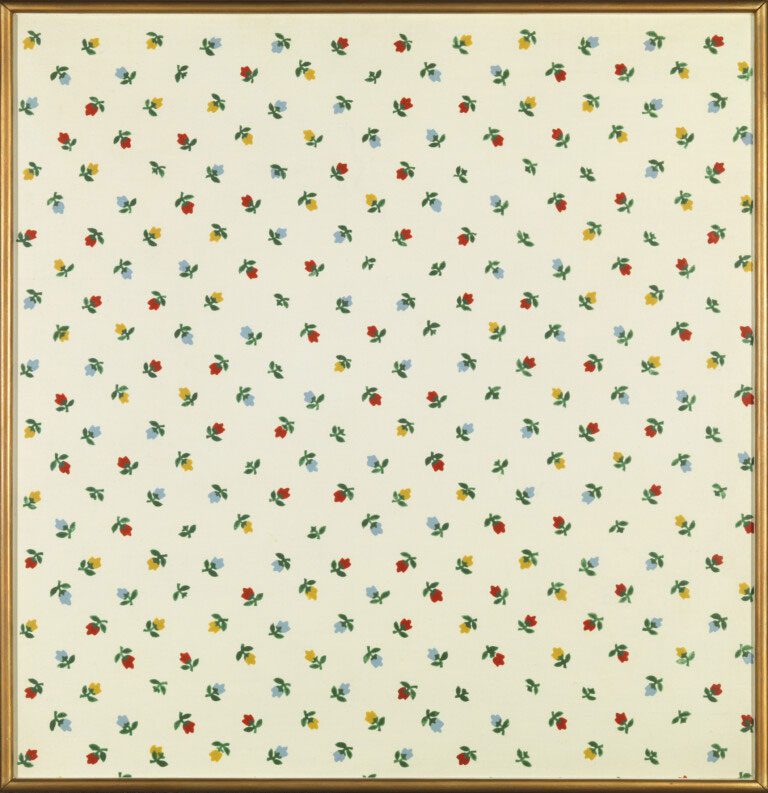 A chequered tea towel, a piece of wrapping paper, an image in a newspaper or a blurred photograph: for Daan van Golden these were not meaningless images, but serious subjects for his art. With great concentration, he reproduced existing patterns or discovered beauty in the serendipitous moments he captured on camera. This makes Daan van Golden one of the most idiosyncratic artists the Netherlands has ever known. The exhibition “Daan van Golden. The Original” presents an overview of his extraordinary oeuvre. On display are the meditative paintings that made Van Golden world-famous, alongside the many photographs, collages and graphic works that are often inextricably linked to them. The concept of originality takes on a whole new meaning: it is no longer a matter of creating something new, but of seeing the beauty in what is already there. Stedelijk Museum Schiedam is celebrating the life and work of Daan van Golden as one of the highlights of the year in which the city of Schiedam is celebrating its 750th anniversary. Van Golden lived and worked in Schiedam for most of his life, and this anniversary year offers the museum the perfect opportunity to honour the artist as a ‘hero of Schiedam’. The exhibition also marks the acquisition of the 1964 work “Untitled (Tokyo)”. This summer, the Schiedam Vlaardingen Fund purchased the painting on a long-term loan for the museum. Info: Stedelijk Museum Schiedam, Hoogstraat, Schiedam, The Netherlands, Duration: 22/3-14/9/2025, Days & Hours: Tue-Sun 11:00-17:00, https://stedelijkmuseumschiedam.nl/
A chequered tea towel, a piece of wrapping paper, an image in a newspaper or a blurred photograph: for Daan van Golden these were not meaningless images, but serious subjects for his art. With great concentration, he reproduced existing patterns or discovered beauty in the serendipitous moments he captured on camera. This makes Daan van Golden one of the most idiosyncratic artists the Netherlands has ever known. The exhibition “Daan van Golden. The Original” presents an overview of his extraordinary oeuvre. On display are the meditative paintings that made Van Golden world-famous, alongside the many photographs, collages and graphic works that are often inextricably linked to them. The concept of originality takes on a whole new meaning: it is no longer a matter of creating something new, but of seeing the beauty in what is already there. Stedelijk Museum Schiedam is celebrating the life and work of Daan van Golden as one of the highlights of the year in which the city of Schiedam is celebrating its 750th anniversary. Van Golden lived and worked in Schiedam for most of his life, and this anniversary year offers the museum the perfect opportunity to honour the artist as a ‘hero of Schiedam’. The exhibition also marks the acquisition of the 1964 work “Untitled (Tokyo)”. This summer, the Schiedam Vlaardingen Fund purchased the painting on a long-term loan for the museum. Info: Stedelijk Museum Schiedam, Hoogstraat, Schiedam, The Netherlands, Duration: 22/3-14/9/2025, Days & Hours: Tue-Sun 11:00-17:00, https://stedelijkmuseumschiedam.nl/
